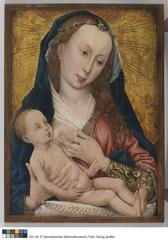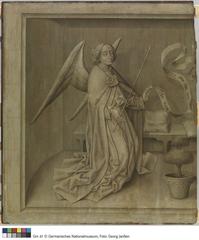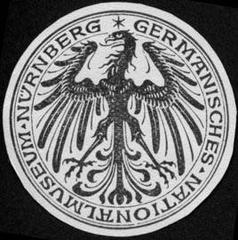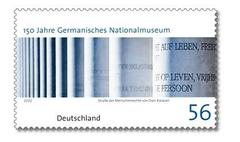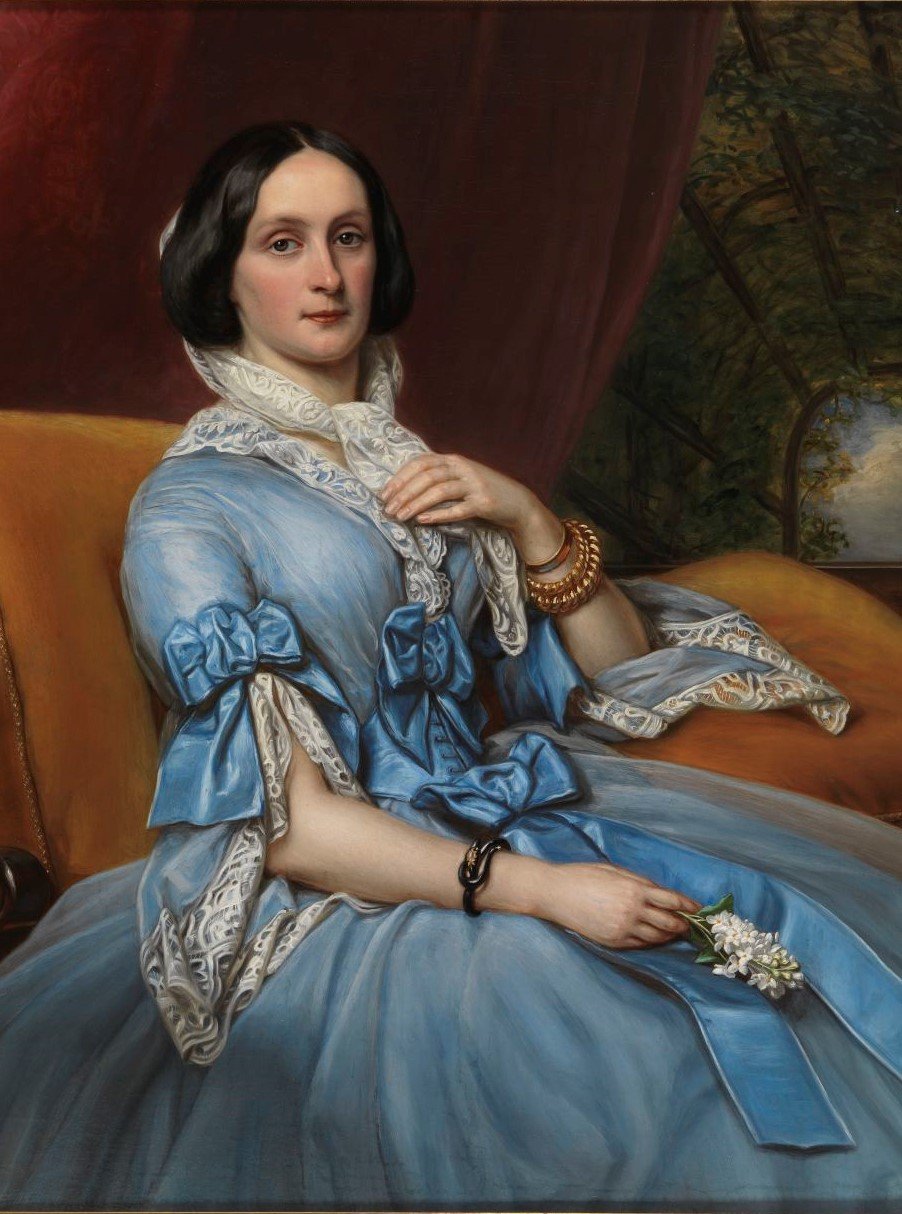
Germanisches Nationalmuseum: Visiting Hours, Tickets, and Comprehensive Guide to Nuremberg’s Historical Treasure
Date: 14/06/2025
Introduction
The Germanisches Nationalmuseum (GNM), located in the heart of Nuremberg, is Germany’s preeminent institution for the cultural history of the German-speaking world. Established in 1852 by Hans Freiherr von und zu Aufseß, the GNM’s mission has always been to document, preserve, and showcase the rich heritage of Germanic regions, transcending political boundaries to emphasize a shared cultural legacy (GNM History and Architecture; Wikipedia). Set within a former 14th-century Carthusian monastery, the museum is as much a journey through architectural history as it is through art and culture (Britannica). With over 1.3 million objects and 25,000 on display, the GNM stands as a cornerstone of Nuremberg’s cultural landscape.
Table of Contents
- Introduction
- History and Founding Vision
- Mission and Role in Cultural Identity
- Architectural Evolution
- Collection Highlights
- Practical Visitor Information
- Educational and Research Initiatives
- Sustainability and Modern Challenges
- Frequently Asked Questions (FAQs)
- Conclusion and Visitor Tips
- References
History and Founding Vision
The GNM was founded in 1852 by Hans Freiherr von und zu Aufseß, whose vision was to create a comprehensive archive and display of the material culture of the German-speaking world, which at the time was politically fragmented (GNM History and Architecture; Wikipedia). The term “germanisch” in the museum’s name refers to the wider Germanic cultural area, promoting unity through shared heritage, language, and art. In 1857, the GNM moved into the former Carthusian monastery, which remains its architectural heart (Britannica). The museum received broad support from individuals, communities, and governments, reflecting the widespread enthusiasm for its mission (ep.liu.se).
Mission and Role in Cultural Identity
From its inception, the GNM’s aim has been to vividly communicate the social and cultural life of German-speaking peoples, deliberately avoiding a narrow focus on political or military history (ep.liu.se). Its collections and exhibitions are interdisciplinary and globally contextualized, designed for audiences of diverse backgrounds (Wikipedia). The GNM continues to explore themes of national and European identity, highlighting cultural interconnectedness and mutual influences between Germanic culture and its neighbors (ep.liu.se).
Architectural Evolution
The GNM’s physical structure is a fusion of medieval monastic buildings, neo-Gothic expansions, and modern glass architecture. The museum suffered heavy damage during World War II but was painstakingly restored and expanded, preserving both its historic character and modern functionality (Britannica). The “Street of Human Rights” installation by Dani Karavan, located at the museum entrance, symbolizes the institution’s commitment to contemporary social issues (discover-bavaria.com).
Collection Highlights
With over 1.3 million objects, the GNM’s collections span from prehistoric artifacts to contemporary art. Notable highlights include:
- The Behaim Globe: The world’s oldest surviving terrestrial globe, created in 1492 (LaidBackTrip; The Museum Insiders).
- Prehistoric and Early Historic Artifacts: The Golden Ceremonial Hat, Hallstatt bronze bull, and Ostrogothic eagle-shaped fibula (european-traveler.com).
- Medieval and Renaissance Art: Works by Tilman Riemenschneider, Veit Stoß, Albrecht Dürer, and Rembrandt (thegeographicalcure.com; tourismus.nuernberg.de).
- Religious and Secular Sculpture: The 12th-century Madonna with the Grape (The Museum Insiders).
- Musical Instruments: The largest collection in Europe, including the oldest playable organ.
- Applied Arts and Everyday Culture: Arms, armor, scientific instruments, and folk art.
- Notable Special Exhibits: The Schlüsselfelder Ship and the Behaim Globe.
The museum also houses significant archives, including the German Art Archive, a library of over 650,000 volumes, and collections of prints and drawings (Wikipedia).
Practical Visitor Information
Location
Germanisches Nationalmuseum
Kartäusergasse 1, 90402 Nuremberg, Germany
Central location, easily accessible by public transport and near other Nuremberg historical sites (GNM Visitor Info).
Visiting Hours
- Tuesday–Sunday: 10:00 AM – 6:00 PM
- Wednesdays: Extended hours until 8:00 PM
- Monday: Closed
- Public Holidays: Check official website for updates.
Ticket Prices
- Adults: €10
- Reduced: €6 (children 7–17, students, people with disabilities, unemployed, groups 10+)
- Family/Small Group: €14 (2–6 people, 1–2 adults plus up to 4 children under 18)
- Children under 6: Free
- School classes/Youth groups: €1 per person
- Free Entry: Wednesdays after 17:30, GNM members, children under 6, selected museum pass holders
- NÜRNBERG CARD + FÜRTH: Free entry and public transport for 48 hours (Nuremberg Tourism)
Purchase tickets online or at the entrance. Early booking is recommended in peak season (GNM Ticket Info).
Accessibility
- Fully accessible with ramps, elevators, and wheelchairs available.
- Reduced or free admission for visitors with disabilities and their companions.
- Assistance dogs are welcome.
Guided Tours and Media Guides
- Guided tours available in German and English for individuals, groups, and school classes (GNM Tours).
- Multimedia guides (€3) in eight languages; children’s media guide offers themed routes (GNM Media Guide).
Amenities
- Café Arte: Austrian-inspired cuisine, snacks, and drinks, plus a pleasant outdoor seating area (GNM Café Info).
- CEDON MuseumShop: Books, gifts, and souvenirs (GNM Shop Info).
- Cloakroom and Lockers: Secure storage for coats and bags.
Travel Tips
- Arrive early to avoid crowds.
- Use public transport—museum is close to Hauptbahnhof and U-Bahn stations.
- Combine your visit with nearby Nuremberg Castle, Albrecht Dürer House, and the Old Town.
- Download or pick up a museum map for easy navigation.
- Photography is allowed without flash, except in special exhibitions.
Educational and Research Initiatives
The GNM is a leader in research and education, offering:
- An academic library with over 650,000 volumes.
- The German Art Archive (Deutsches Kunstarchiv).
- Public lectures, temporary exhibitions, and educational programs for all ages (GNM Plan Your Visit).
- Special projects on topics such as Albrecht Dürer and historical musical instruments (GNM Research Projects).
Sustainability and Modern Challenges
The museum addresses contemporary issues through:
- Energy-efficient lighting and eco-friendly materials.
- Conservation efforts supporting Nuremberg’s sustainable tourism goals (TravelSetu).
- Upcoming exhibitions tackling globalization, Nuremberg’s historical global connections, and critical reflection on challenging aspects of the city’s past (museumsfernsehen.de).
Frequently Asked Questions (FAQs)
Q: What are the Germanisches Nationalmuseum opening hours?
A: Tuesday to Sunday, 10:00–18:00; Wednesdays until 20:00 or 20:30; closed Mondays.
Q: How much do tickets cost?
A: Adults €10, reduced €6, family/small group €14, children under 6 free. Free entry Wednesdays after 17:30.
Q: Are guided tours available?
A: Yes, in German and English. Advance booking is recommended.
Q: Is the museum wheelchair accessible?
A: Yes, with ramps, elevators, and wheelchairs available.
Q: Can I take photos?
A: Non-flash photography is permitted for personal use in most areas.
Conclusion and Visitor Tips
The Germanisches Nationalmuseum is an essential destination for anyone passionate about art, history, or cultural heritage. Its vast collections, innovative exhibitions, and commitment to accessibility and education make it a highlight of any visit to Nuremberg. To make the most of your experience:
- Plan your route using the museum map.
- Allow at least 2–3 hours; enthusiasts may need a full day.
- Take advantage of multilingual guides and family-friendly resources.
- Combine your museum visit with other nearby Nuremberg historical sites.
- Check the official website for current exhibitions and updates.
For additional resources, virtual tours, and the latest exhibition news, explore the GNM’s digital offerings and download the Audiala app for audio guides and up-to-date information on Nuremberg’s cultural attractions.
References
- Germanisches Nationalmuseum History and Architecture, 2024, Germanisches Nationalmuseum Official Website (GNM History and Architecture)
- Germanisches Nationalmuseum, 2024, Wikipedia (Wikipedia)
- Germanisches Nationalmuseum, 2024, Britannica (Britannica)
- LaidBackTrip, 2024, The Behaim Globe and Museum Highlights (LaidBackTrip)
- The Museum Insiders, 2024, Germanisches Nationalmuseum Overview (The Museum Insiders)
- Museumsfernsehen.de, 2024, Upcoming Exhibitions and Contemporary Issues (museumsfernsehen.de)
- TravelSetu, 2024, Sustainability Initiatives at GNM (TravelSetu)
- Germanisches Nationalmuseum Plan Your Visit, 2024, Visitor Information (GNM Plan Your Visit)
- discover-bavaria.com
- whichmuseum.co.uk
- tourismus.nuernberg.de
- european-traveler.com
- thegeographicalcure.com
- meticulousmeanderings.com
- touristplaces.guide
- gnm.de
- ep.liu.se


